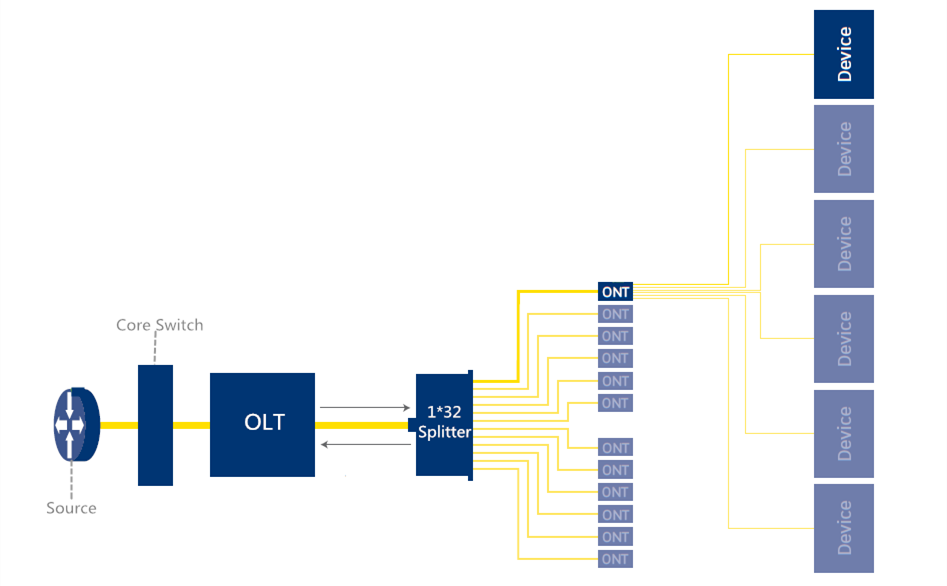- Related articles
- Optical Transceivers for Cisco WS-C3750E-24PD-S Switch
- The datasheet of Cisco SFP-10G-SR
- Optical Transceivers for Cisco WS-C3750V2-24TS-S Switch
- The difference between CSFP and SFP
- Optical Transceivers for Cisco N6K-C6001-64T Switch
- All Cisco MA-SFP-1GB-SX's information (List price, Specs, Datasheet PDF, Compatibility mat
- What Is GYFC8Y Optical Fiber Cable?
- Optical Transceivers for Cisco WS-C3560G-24PSS-RF Switch
- The difference between XENPAK and X2
- Optical Transceivers for Cisco WS-C2960S-48LPD-L Switch

With the rapid development of communication technology, LAN(Local Area Network) has been gradually formed in more and more companies, schools and other places with many computers gathering together for a mutual networking source. However, as increasing demands for network bandwidth, the traditional LAN can not afford heavier cabling load to support a higher bandwidth. So, passive optical LAN has been coming into being for improving the management of LAN and network performance.
Advantages of passive optical LAN
Compared with the traditional LAN, passive optical LAN is based on optical fiber rather than copper wire, which has a lighter weight, smaller size and higher security in data transmission. Therefore, it makes the cabling environment in passive optical LAN easier and more convenient to manage, in addition, a higher bandwidth and better performance are ensured. Especially for installers or maintainers, passive optical LAN offers no worry to them for the power consumption because up to 40% could be decreased, and less device and space are needed, which provides much more flexibility to install and manage.
What are needed for deploying a passive optical LAN?
As there is fewer devices needed for deploying a passive optical LAN, the whole network structure looks easier, as below showing the basic structure of passive optical LAN and also the essential components required. I will respectively give an understandable introduction to each of them.

Optical Line Terminal (OLT): This device is used to handle efficiently the signals from both upstream and downstream. In passive optical LAN, the upstream refers to the service provider, and the downstream refers to the terminal devices like ONTs (Optical Network Terminals). Basically, OLT receives signals from upstream and then sending them to the downstream. Also, it can receive from ONTs and then send to the service provider.
Fiber Optic Splitter: As there are several fiber optic splitters deployed between OLT and ONT, the optical signals are able to distributed equally to the terminal users without supplying power. Fiber optic splitter is a very common kind of passive optical components, the commonly used fiber optic splitter is PLC splitter in passive optical LAN.
Optical Network Terminal (ONT)
Prior to connecting computers and other devices to passive optical LAN, the inputted optical signals need to be transferred to electrical signals. As most parts of passive optical LAN function based on optical fiber, ONTs and ONUs (Optical Network Units) are applied to provide copper ports for the connection between computers and other devices so as to accomplish the photovoltaic conversion.
In addition to the above components, there are also other kinds of optical components used to connect and mutually manage the whole network, such as fiber patch cable, fiber enclosure, optical connectors and so on. They make an important contribution to the high performance of passive optical LAN.
Conclusion
As mentioned above, passive optical LAN offers not only easy cabling management and also higher performance due to fewer devices and space required and advanced materials and technology applied. From the point of buyers, they can have a better experience of the network with lower cost. And to give a kind remind as an experienced fiber optical technician, the structural design of passive optical LAN and the selection of needed components ought to refer to the number of end devices which the network will serve.





































































